OALP XIX Seminar 10
Categories: Uncategorized
Wednesday, October 2, 2019
To kick off our 10th seminar, we met in Seminole at the Farm Bureau office, hosted by Rodney Sutterfield, and then proceeded to our first stop of the day: Harbin Fish Farm. Spencer Harbin explained that Harbin Fish farm began more than 50 years ago in Kansas and now operates both there and in Oklahoma. At each operation, they have about 25 species of fish but sell about five species — mostly bass types, catfish and bluegill. Approximately 80 percent of their fish go for pond fish and the other 20 percent go for human consumption. Spencer estimated that it takes about $500,000 to run the operation and they will sell about 175,000 pounds of fish this year. Spring is the busiest time for them, but they work year round, especially growing catfish. Cormorants, a large diving bird, are the biggest predators along with river otters. Annually, they spend nearly $30,000 to take care of predation. Spencer showed us how they have recently begun using water hyacinths as beneficial plants. The plants clean the water and use fish waste as fertilizer, providing cleaner water for the fish.
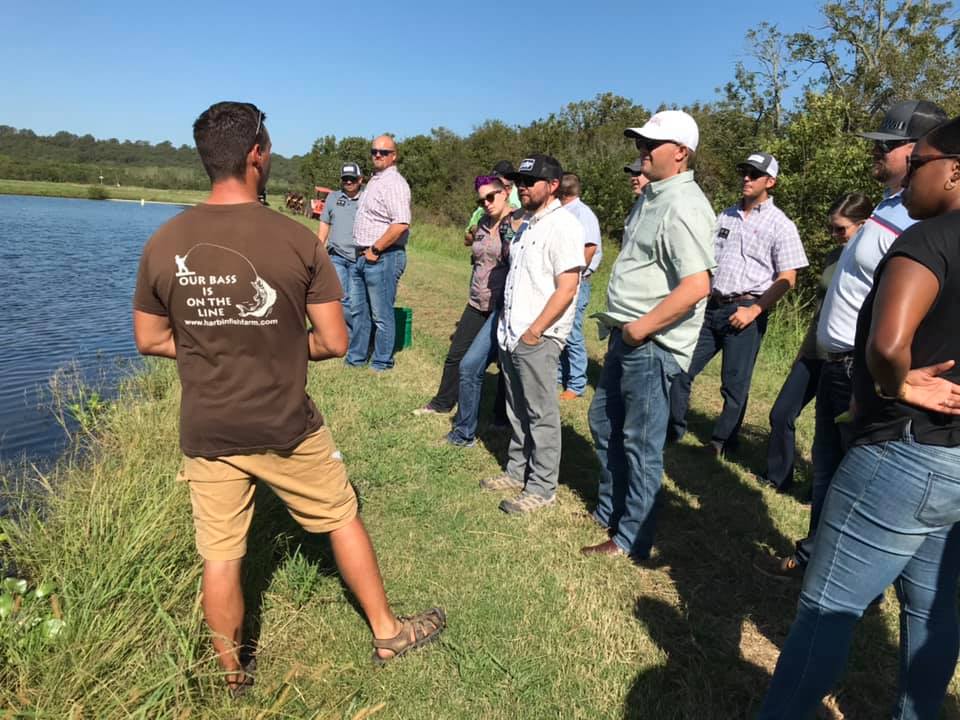
Our next stop was the Pittsburg County Extension office, where Travis Hanks provided Beekeeping 101 education to our class. Travis stated one of the primary objectives with a hive is making an environment in which the queen bee wants to stay. A hive in full production is 20,000-25,000 bees. Coming out of winter, a hive might be closer to 5,000 bees. The life cycle of a bee is about 4-8 weeks. A queen, however, will live roughly 2-4 years. The queen only has to mate once a year to produce all of the bees needed for the hive. When the hive determines it is time for a new queen, they will select a young larva to feed royal jelly, which will produce a new queen bee. Besides the queen, there are worker bees and a few drones. Generally, the old worker bees defend the hive while the middle-aged fly out to gather pollen and nectar. Young bees tend to the larvae. Travis shared that a bee can fly up to two miles to find nectar and pollen. One pound of honey requires approximately 2 million flowers to be visited, and in one growing season one worker bee makes 1/12 teaspoon of honey. Almond production is most impacted by bees. Many bees are transported to California each year for almond pollination to ensure good production. During transport, only about a 5 percent bee loss occurs. Usually, bees are transported at night while they are sleeping rather than during the day when the bees would be more naturally active and apt to leave the hive. While honey is a great food for humans, it is also the bees’ food. It is recommended that when harvesting honey, you follow the rule of “take half, leave half.” With ideal conditions, a hive will produce 60-100 pounds of honey each year. Most Oklahoma honey is produced in May and June.
We left the Extension office for Buffalo Creek Guest Ranch, hosted by Dave and Darlene Shaw and their son, Derrick. Dave’s family has been ranching near Talihina since 1832. Throughout the years, the Shaws have been very entrepreneurial and had many successful businesses. They own D&D Ag Service and have done a great deal of work for the Army Corps of Engineers. That company is also responsible for mowing the turnpike from Hugo to Tulsa along with applying some herbicide. Today, most of their work is for the government and very little farm work. Each year, Dave completes about 600 tax returns for area agricultural producers. They have had a catering business since 2001, but are starting to phase that out as they head into retirement. Additionally, they entered into agritourism in 2011 with the guest ranch, but are selling that now as they want to retire. About a year and a half ago, the Shaws began considering hemp. Dave’s nephew, along with two business partners, approached him and Darlene about growing a crop. They obtained a license for 130 acres, but ended up planting about 80 acres. We were supposed to see the hemp growing, but unfortunately, it was flooded out. They are using this as a learning opportunity though. Very little research is available on hemp, which makes the production of it difficult. The Shaws feel like everything is experimental. Currently, seed quality is a big issue for them, so they believe the best method for planting is with clones.
The last stop of the day was at the Kiamichi Mountains Christian Mission for our community service project. We helped them prepare for the upcoming Big Foot Festival by sweeping several meeting areas and moving tables and pews. The money they raise from the festival will go to area students as scholarships. We thoroughly enjoyed our time giving back. After a full day, we headed to Idabel to rest our weary bones!
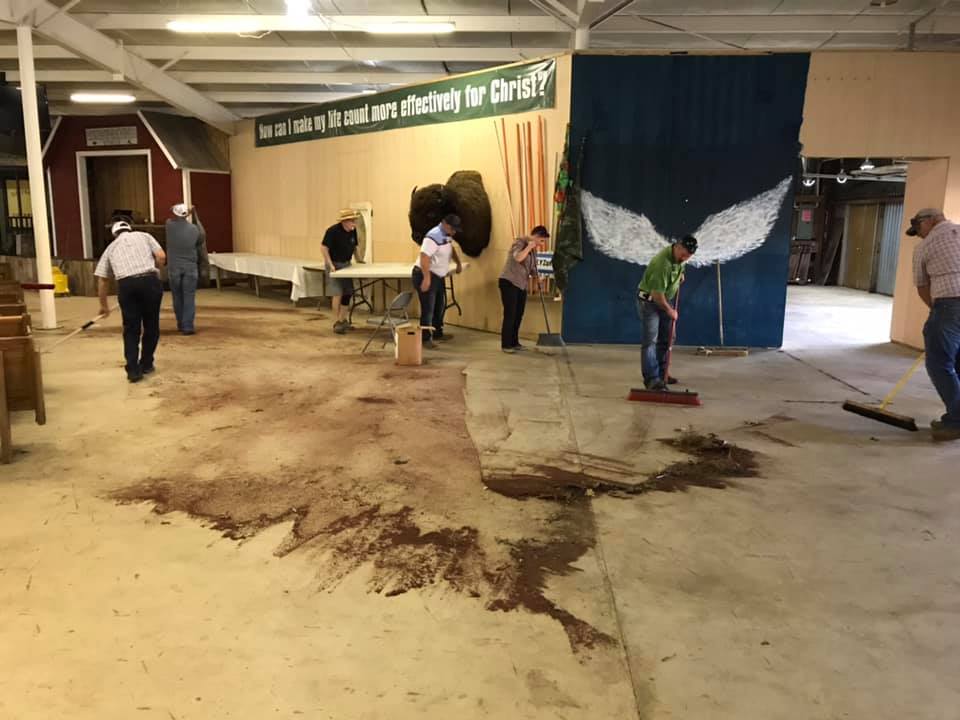
Thursday, October 3, 2019
After a good night’s sleep, we boarded the bus and headed toward our first stop: Tyson Hatchery of Broken Bow. Shawn Mitchell, hatchery manager, showed us the different phases eggs go through. They receive the eggs from the layers and then house them in a temperature-controlled environment until they are ready to be incubated. After proper incubation, they are moved to hatching rooms. Once the chicks hatch and are dry, they are moved to processing. We did not get to see this process, but we were able to hold some fresh, fluffy chicks before they were shipped off to growers in the area.
Brinkley Auctions was our next stop. We met with the owner, Larry Brinkley, and his granddaughter, BreeAnn Brinkley Campbell, and they showed us around the auction house. They provided us with donuts, refreshments, attire and some pretty cool stories about how the auction came to be. We looked at some of the tractors for the upcoming auction and drove around the facility. They host an auction every month and fill their entire lot with tractors and other farm equipment. They sell 400-500 tractors at every auction.
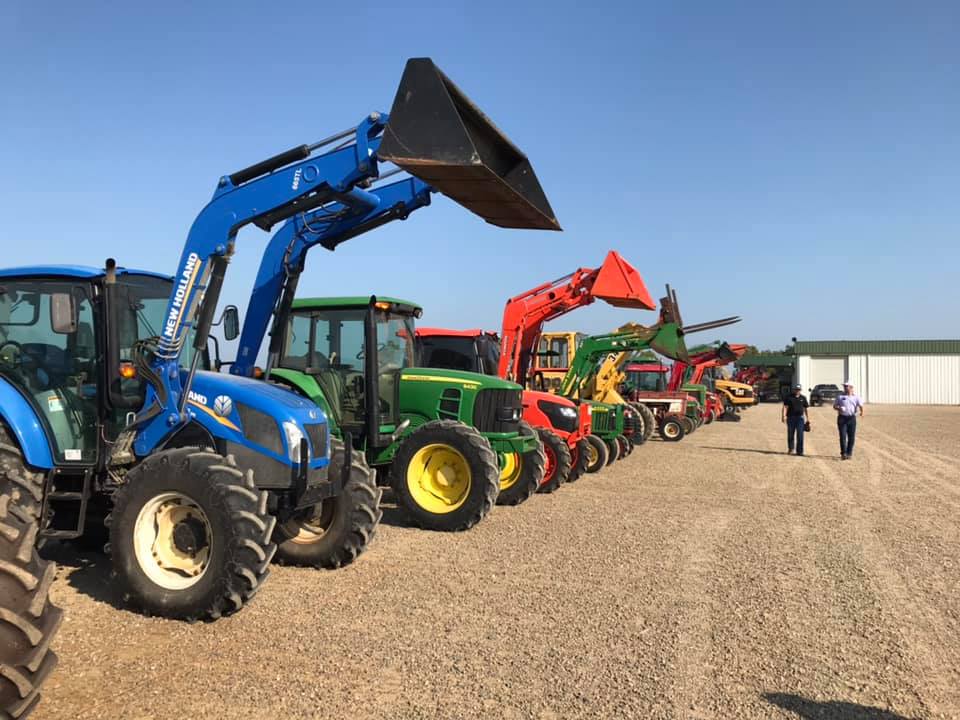
We then ventured over to McCain Poultry Farm. Tommy McCain raises chickens that will be sent to the chicken processing plant in Broken Bow. He explained how he manages and feeds the chickens and talked about being a contract grower for Tyson. He was the top broiler producer for Tyson in 2007 and uses that goal to be better and better every year. We were impressed at how confident he was about his profession. Tommy also allowed us to peek inside a chicken house. Looking at chickens worked up an appetite for the group, so we headed for lunch at David Beard’s where we enjoyed fresh fish and chicken fried steak!
After lunch, we headed for the Weyerhaeuser Timberlands. While at the facility, we learned about the forest and lumber production, processing of the trees and the 30-year life cycle most trees go through while at Weyerhaeuser. Touring the forests, we drove to two different locations and Kelly Kemp showed us how the land was prepped for new trees with a dozer and how the trees were cut down, stripped and ready for hauling. We learned how they manage their trees and what they do to make sure they grow correctly.
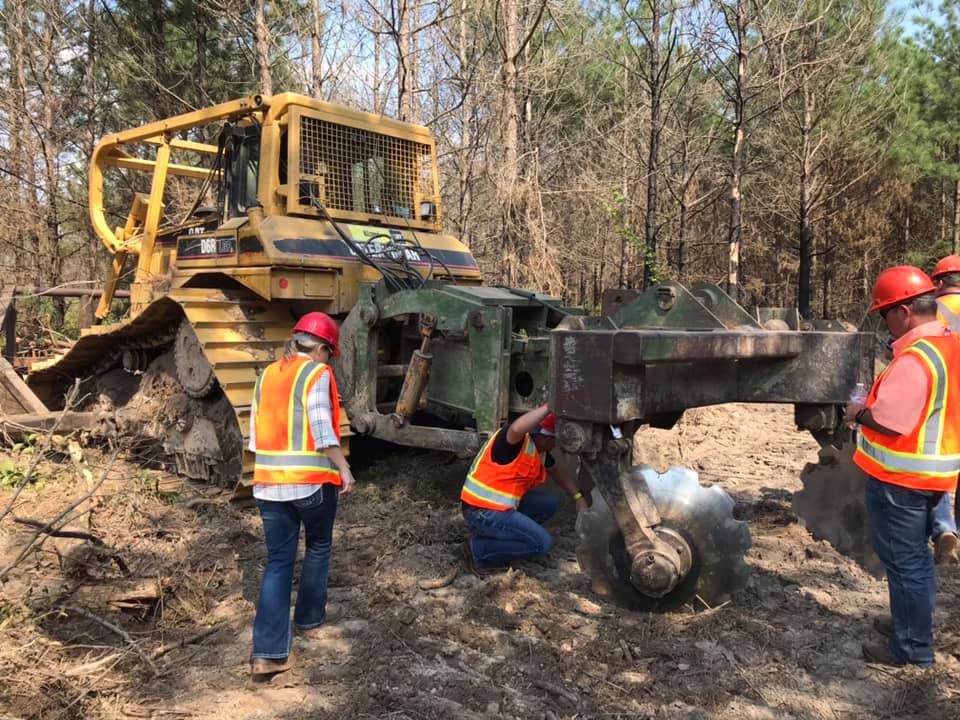
We were interrupted by a thunderstorm, so we headed out to our next stop: Kiamichi Forestry Research Station. While at the research building, we listened to senior station superintendent Bob Heinemann talk about the different things the Kiamichi Forestry Research Station has to offer, such as seed production. He took us on a tour of the facility and went further into detail about what goes on during seed production. We then ate dinner while our next speaker, Pete Herron, talked about his generational family tree farm. Pete’s operation does many things differently from Weyerhaeuser, but also does some things the same, such as the harvesting of the trees.
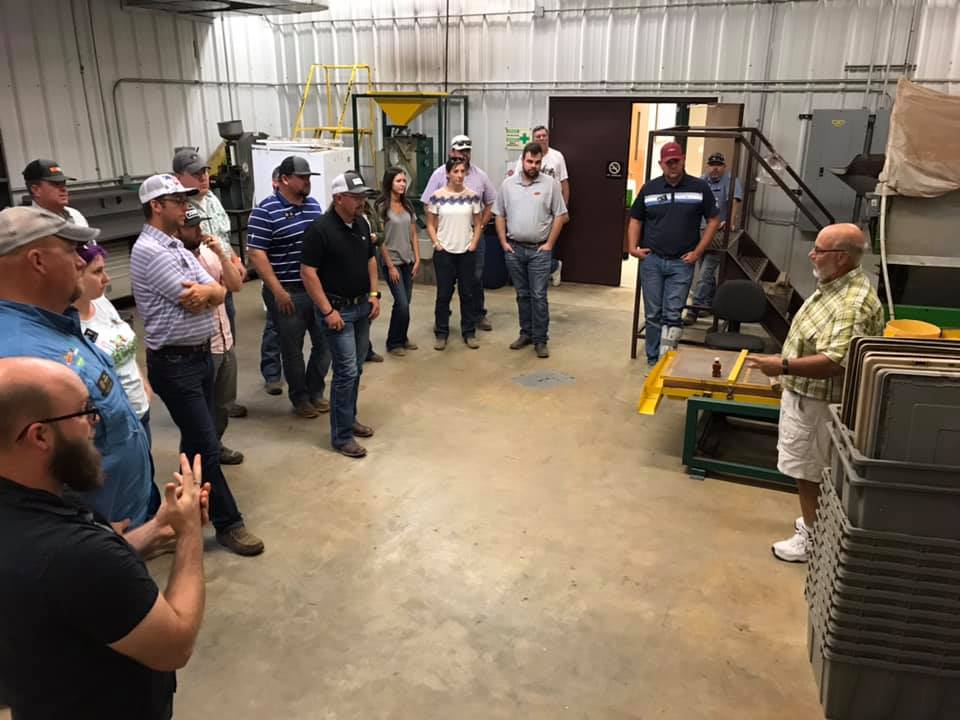
Friday, October 4, 2019
The final day began at the Mt. Olivet Cemetery in Hugo. This cemetery is known for its Showman’s Rest memorial where famous circus performers are buried. It is also the resting home to famous rodeo stars Lane Frost, Freckles Brown and Todd Whatley.
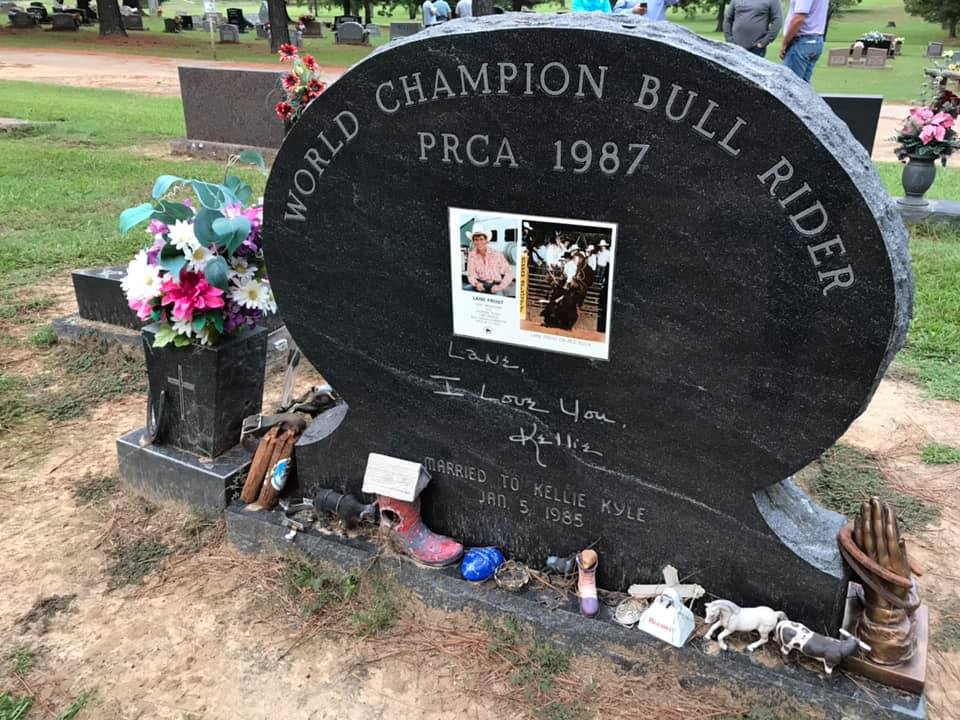
We departed the cemetery for Bokchito where we rendezvoused with our tour guide for the day, Kevin Dale. We traveled to Griffin Farms in Hendrix. Griffin Farms is a diversified cattle, row crop and pecan farm that spans several counties in Oklahoma and Texas. We met Chris Griffin, farm manager, at an improved pecan orchard on the banks of the Red River. The pecan orchard included four varieties of trees and was nearing early harvest time when we arrived. We discussed many challenges in pecan production, including feral hog damage and price volatility. We had a short walk to a canal dredged into the Red River where a small barge held three large pumps that supplied irrigation water to the orchard and 3,000 acres of corn, soybeans and wheat.
The next stop of the day was a sod farm. Gary Weger and David Kelley of Weger Sod Farm and Kelley Sod Farm, respectively, presented a hands-on experience on sod farming. We discussed the management of sod production including mowing schedules, fertilization and harvest logistics. They harvested several strips of sod and allowed us to walk along the automated sod harvester that produces pallets of stacked sod rolls with only a tractor driver.
Lunch at The Dock was the next stop. There, we enjoyed a meal sponsored by Kelley and Weger Sod Farms. Our final stop of the seminar was a short drive west to the town of Calera. We met Rebecca and Mark Sandmann, owners of the Three Rivers Pecans Fudge Factory and Amish Store. Mark and Rebecca harvest more than 6,000 pecan trees, allowing them to provide fresh pecans at their stores. They own two store locations that showcase an array of Amish goods as well as homemade fudges and too many other goods to list. We enjoyed shopping the supply of unique goods and foods and savored our complimentary pecan cinnamon rolls on the way out.
In mid-November, we will travel to northeast Oklahoma for seminar 11.
Sincerely,
Kristin Young, class XIX